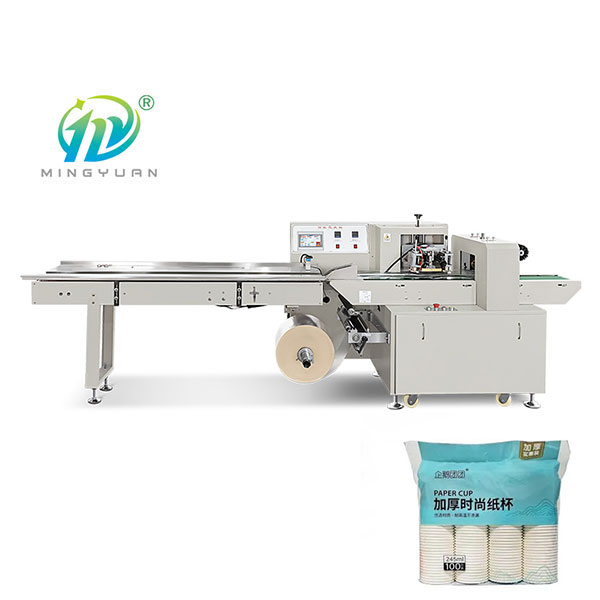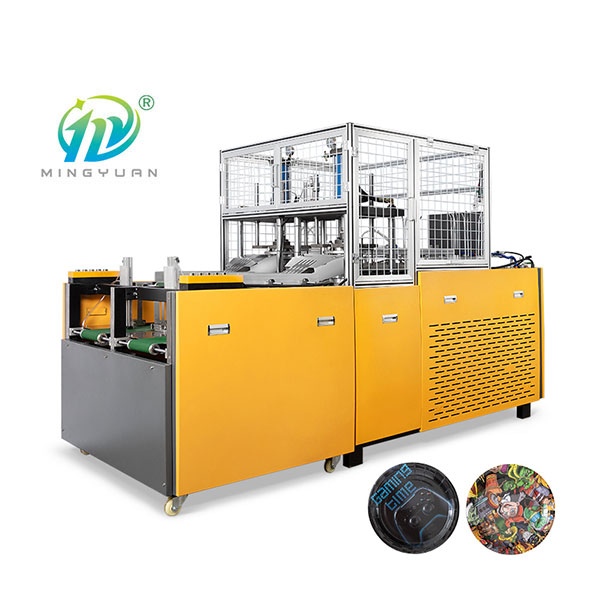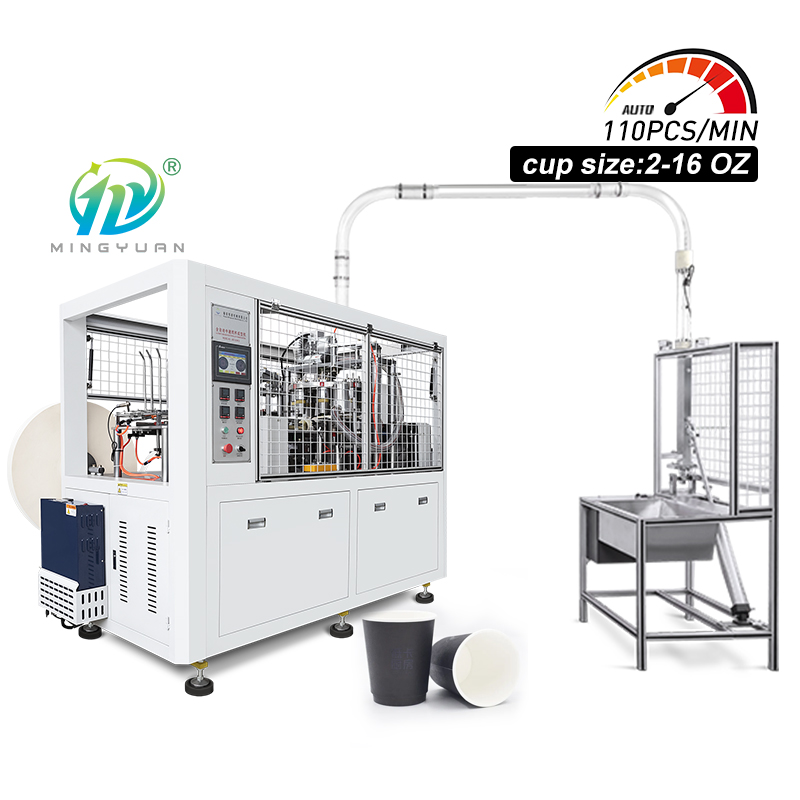Hello, fellow paper product manufacturers! If you’ve ever grappled with slow production lines, high waste rates, or frequent machine breakdowns while making paper cups, you’re far from alone. The root of these frustrations often boils down to one critical factor: the machine’s drive system—specifically, whether it uses a full-servo configuration or relies on traditional motor setups. Today, we’ll demystify the working principle of paper cup machines first, then dive deep into why Full-Servo Machines outshine ordinary machines in efficiency.
1. The Core Working Principle of a Paper Cup Machine
Before comparing efficiency, let’s break down how a paper cup machine turns flat paper into usable cups. It’s a streamlined, multi-step automated process, but every step’s precision directly impacts final output. Here’s the key workflow:
•Paper Feeding & Cutting: The machine pulls pre-printed, PE-coated paper (essential for leak resistance) from a roll. It then cuts the paper into uniform fan-shaped “blanks”—the raw material for cup bodies.
•Cup Body Forming: These blanks are rolled into a cylindrical shape. The overlapping edge of the cylinder is heated and bonded (temperature and pressure control here is make-or-break for leakproofness).
•Bottom Bonding: A separate paper disc is pressed, heated, and sealed to the bottom of the cylinder, creating a closed cup base.
•Trimming & Shaping: The top edge of the cup is trimmed to ensure uniformity, and the cup is shaped into its final, smooth form.
•Automatic Discharging: Finished cups are counted by sensors and collected in stacks—ready for packaging.
The problem? Ordinary machines struggle to maintain consistency across these steps. Even small deviations (e.g., misaligned paper, uneven heating) lead to waste or downtime. That’s where full-servo technology changes the game.
2. Why Ordinary Paper Cup Machines Hit Efficiency Bottlenecks
Most ordinary paper cup machines use asynchronous motors or only one servo motor (instead of full-servo coverage). This design creates three major efficiency pain points:
Unstable Speed = Wasted Time & Materials
Asynchronous motors can’t adjust speed smoothly. When the machine switches between feeding, forming, and trimming, speed fluctuations are common—causing paper blanks to misalign or bonding to be uneven. For example, if the feeding speed is 5% faster than the forming speed, blanks overlap incorrectly, producing defective cups. Waste rates for ordinary machines often hit 5-8%, and operators must pause to reset the machine—cutting actual production time by 20-30%.
Low Precision = Limited Adaptability
Ordinary machines lack real-time parameter adjustment. If your paper thickness changes slightly (a common issue with bulk materials), the machine can’t fine-tune bonding temperature or pressure on the fly. This leads to either under-bonded (leaky) cups or over-bonded (burnt) ones. Worse, switching between cup sizes (e.g., 6OZ to 16OZ) takes 30+ minutes of manual calibration—disrupting production schedules.
High Downtime = Lost Output
Ordinary machines rely on manual monitoring. If a paper roll jams or a heating element fails, there’s no real-time alert—operators only notice when the line stops. On average, ordinary machines have 30+ minutes of downtime per incident. Even with a rated speed of 80-100 cups per minute (PCS/MIN), their actual output is often 20-30% lower than advertised.
3. Full-Servo paper Cup Machines—The Efficiency Game-Changer
Full-servo paper cup machines address every shortcoming of ordinary models. By integrating full servo motors (one for each critical step) with advanced PLC controls and smart sensors, they turn “inconsistency” into “reliability”—and boost efficiency by 25-40%. Here’s how:
Full Servo Drive = Stable, High Speed
Unlike ordinary machines, Full-Servo Machines for feeding, forming, bottom bonding, and trimming. Servo motors adjust speed and torque in real time with ±0.1mm precision—no more fluctuations.
PLC & Sensors = Minimal Waste
Full-Servo Machines use top-tier PLC systems (Schneider, Omron) linked to failure-detecting sensors. If the paper roll is low, the bonding temperature is off, or a blank misaligns, the sensor triggers an immediate alert—and the machine pauses gently (instead of crashing). Waste rates drop to less than 2%, and operators don’t need to stand by 24/7—the system handles minor issues automatically.
Flexibility = Fast Changeovers
Switching between cup sizes takes seconds —no manual calibration. It supports quick switching of cup sizes (e.g., 8oz, 12oz, 16oz paper cups). This can be achieved by replacing molds or adjusting program parameters, without large-scale equipment modification, adapting to the customized needs of different customers.This is a lifesaver for manufacturers handling multiple orders daily.
4. Conclusion: Invest in Full-Servo—Invest in Your Business
For paper cup manufacturers, efficiency isn’t just about speed—it’s about consistent output, low waste, and less downtime. Full-servo machines don’t just “work”—they work smarter, turning technical advantages into higher profits and business growth.
If you’re tired of the inefficiencies of ordinary machines, take the first step toward an upgrade. Contact Mingyuan today!Get a free sample of finished cups and a customized quote from a 15-year experienced manufacturer you can trust. Your more efficient production line starts here.








